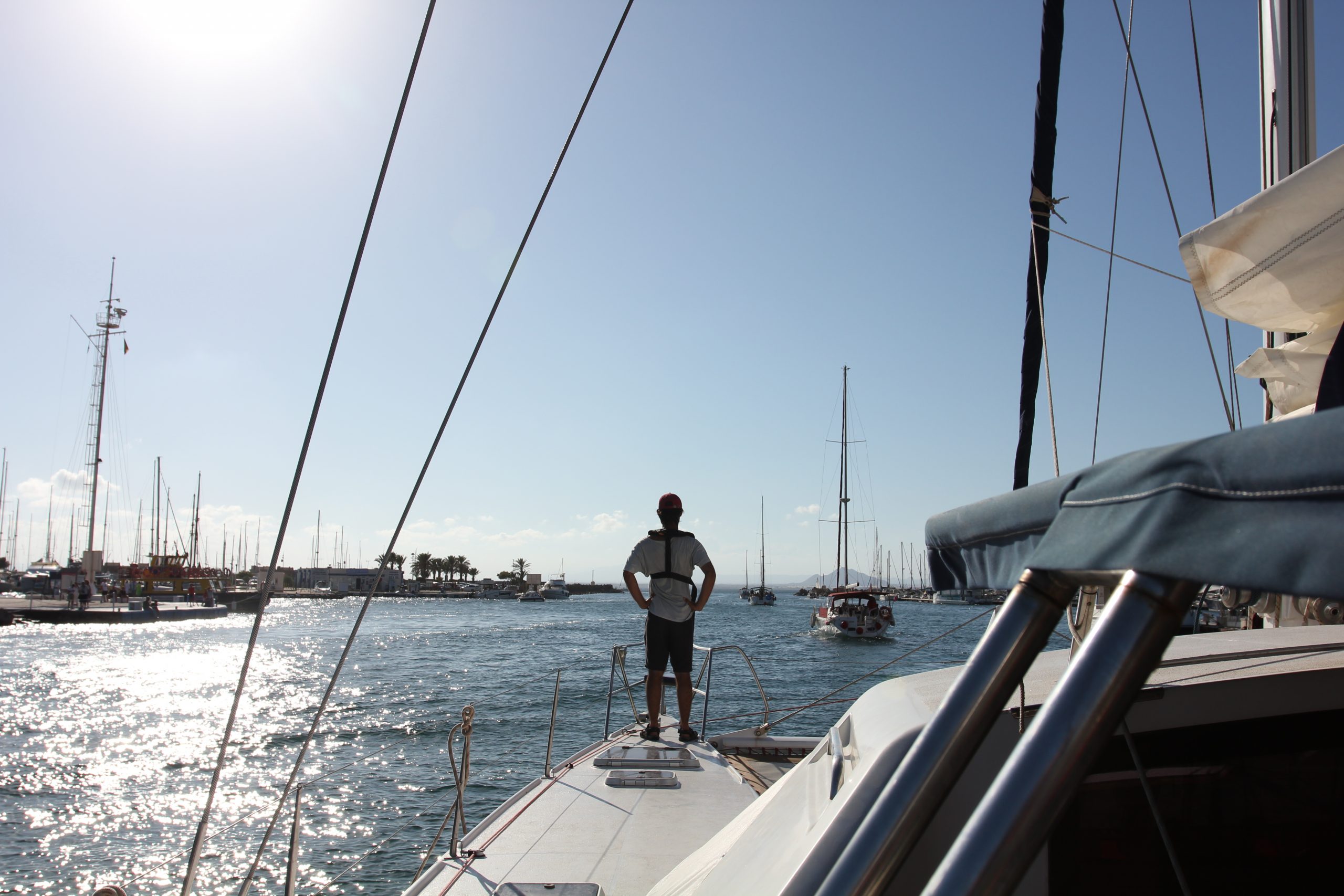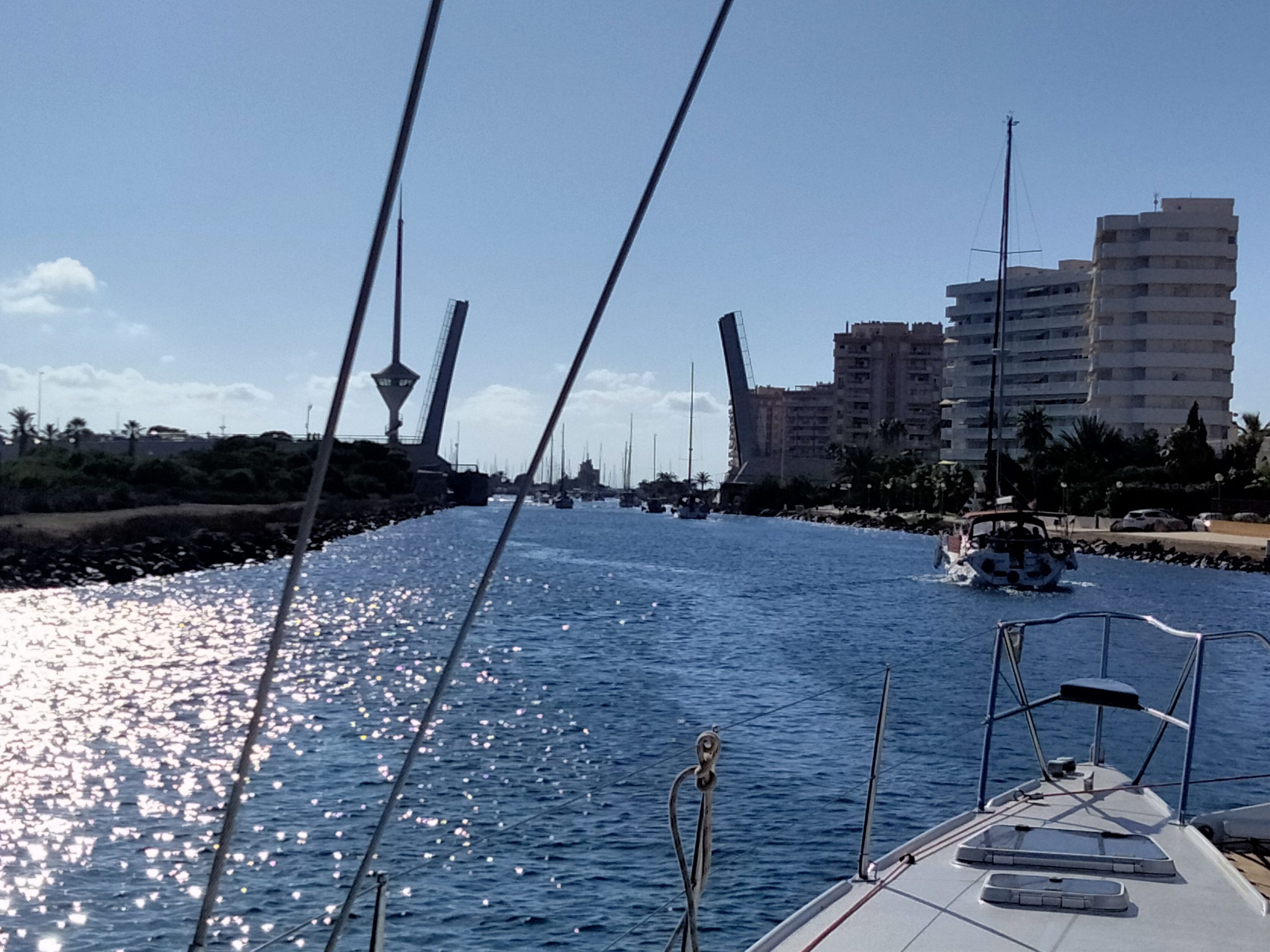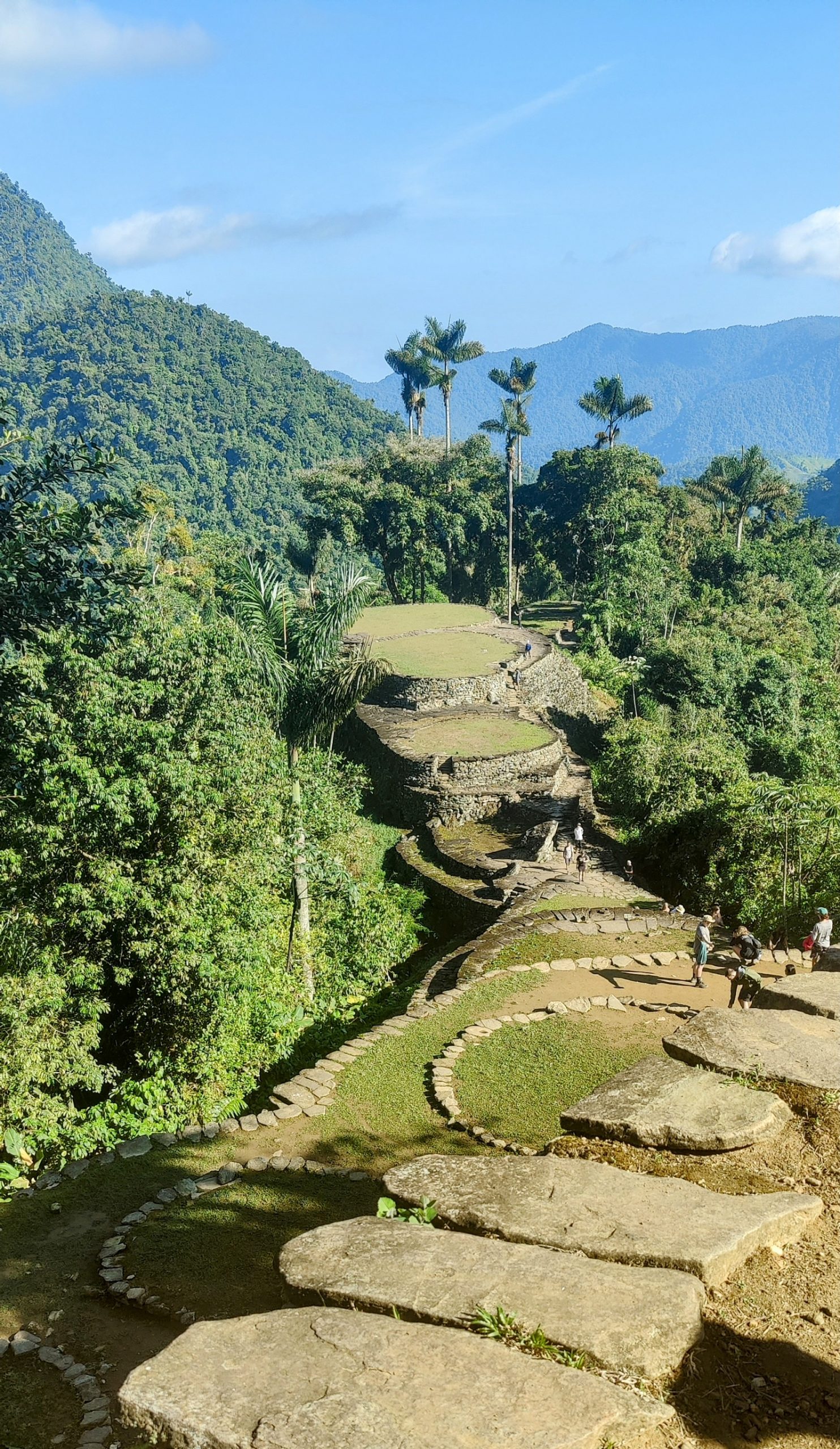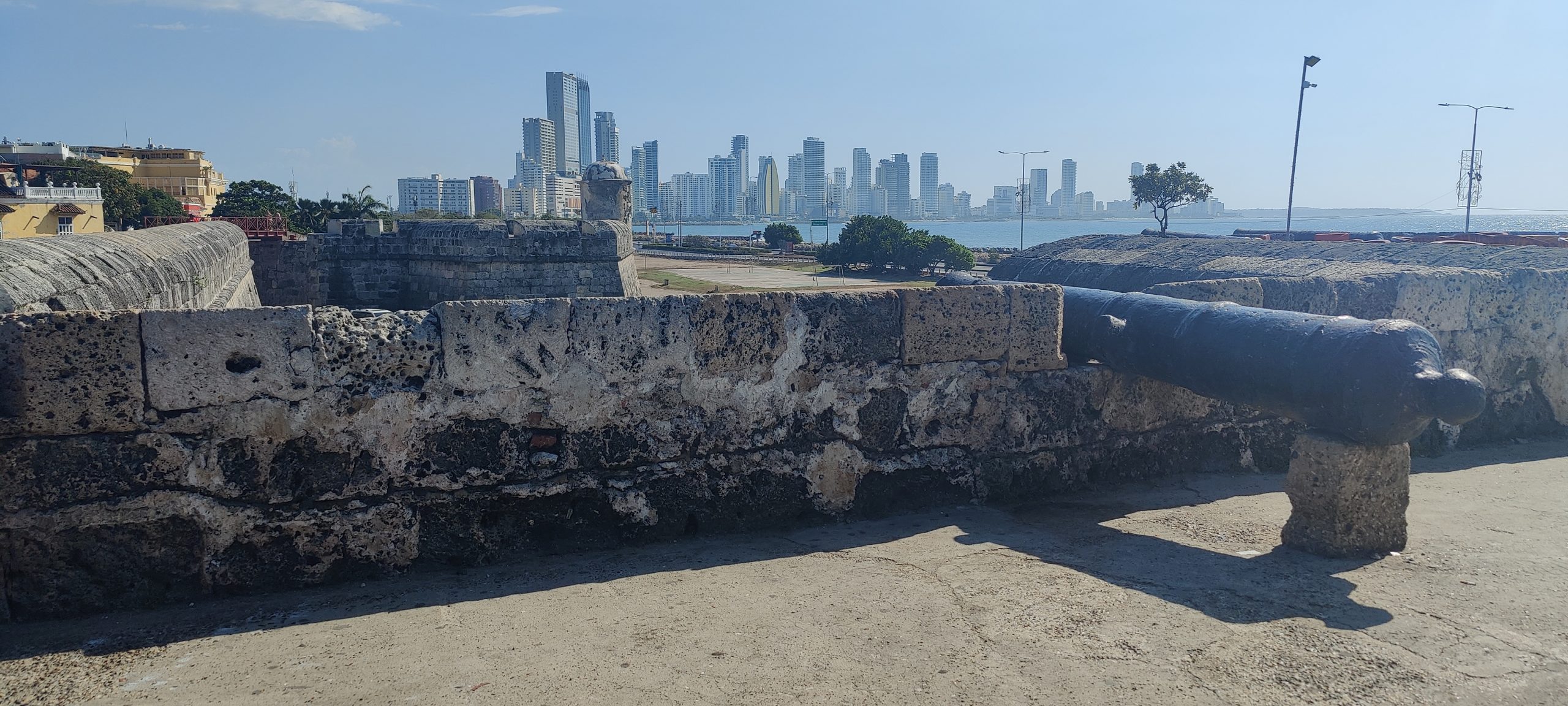We have been planning on sailing from Cartagena to Mar Menor for a while now. Initially, we had planned for leaving Cartagena last sunday for a couple of days. Along with some sailing practice, we also wanted to see the lagoon at Mar Menor.
The plotter
Sunday morning we had prepared everything, or we thought we had prepared everything. When it was time to leave, Martin sat down at the Simrad plotter to create a route for navigation. He had trouble with the plotter and couldn’t save the waypoints to make a route. It wasn’t even possible to delete everything on the SD card to see if there was an issue with space in the card. Anyhow, we had already bought a new Raymarine plotter just waiting to be replaced. We decided to ditch the old Simrad and upgrade right away. It meant that the Mar Menor trip had to be postponed.
Martin got the new plotter and card installed during the week, and saturday morning we were ready for the trip to Mar Menor once again.
Mar Menor
Mar Menor meaning “Little Sea” as opposed to the great Meditterranian sea, is a shallow saltwater lagoon. With its 170 square kilometer, it’s the largest lagoon in Europe. The lagoon is separated from the Meditterranian by “La Manga”, a strip of sand. Today it’s built up with tall buildings, most of which are holiday homes and hotels. In the northern end of the lagoon, there is an area of salty wetlands preserved as a National Park. Since 1994 the Park has been on the Ramsar list for the conservation and sustainable utilisation of wetlands.
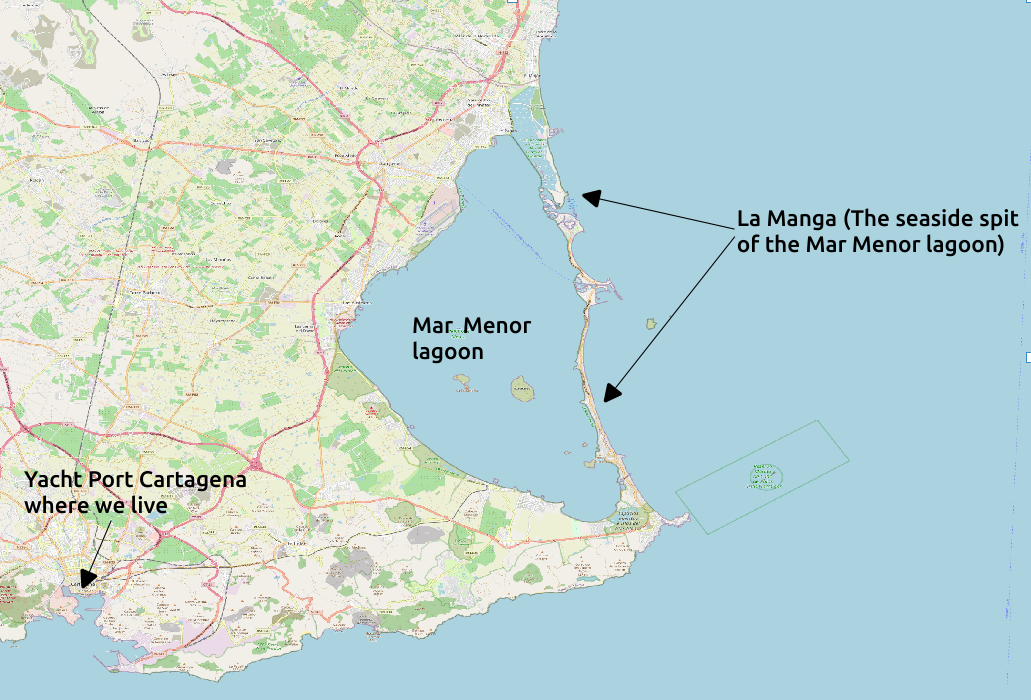
Good beginning
Getting out of the dock went excellent. We got fuel in the starboard side engine. It was almost empty, because the last time we fueled, the fuelcap was stuck and bent the key. We actually ended up paying for welding the key bigger in order to get the fuelcap open. In the photo, you can see the outline of the old key.
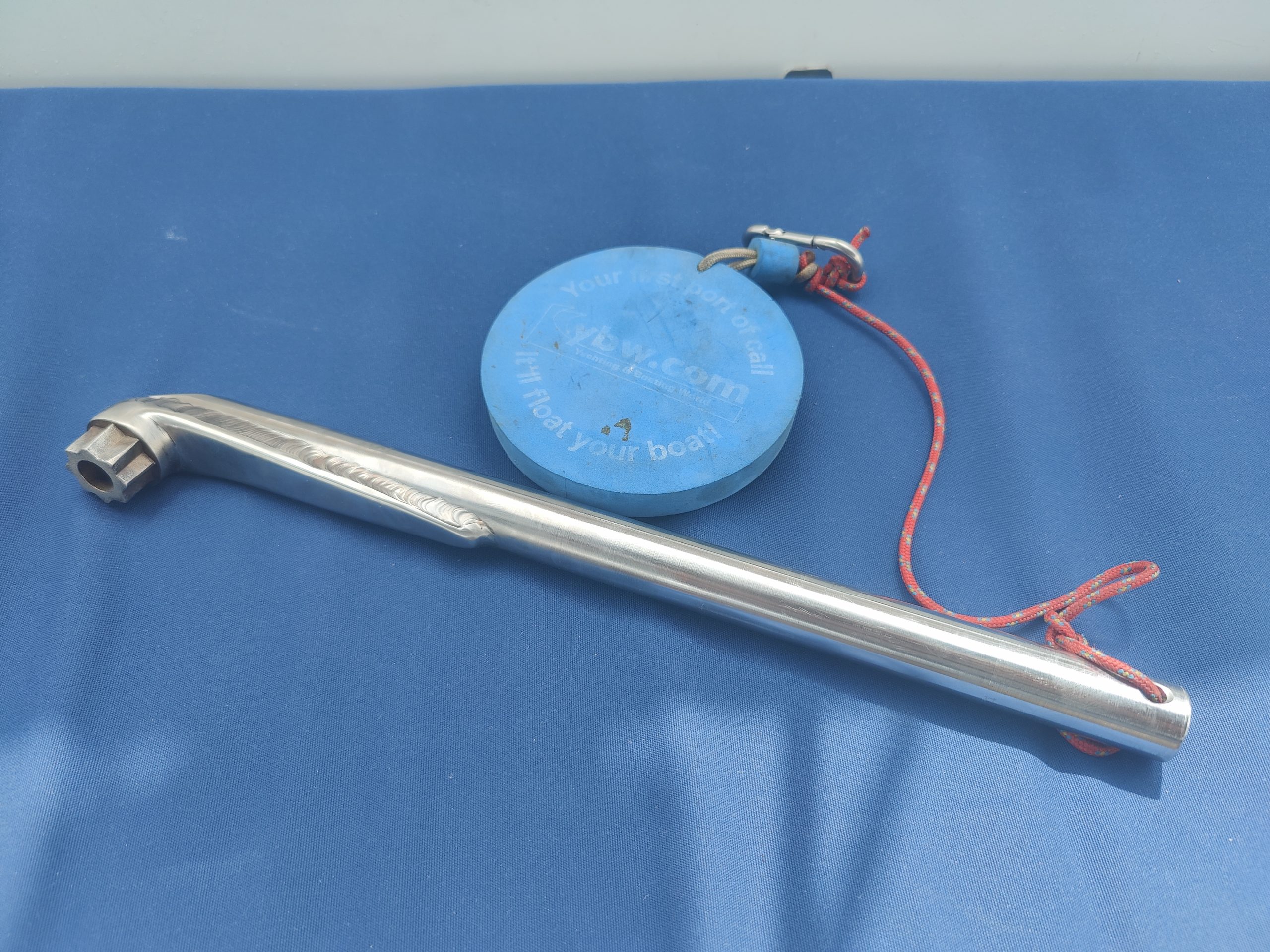
Sailing from Cartagena to Mar Menor
The wind direction was east/southeast, which meant we were gonna sail upwind (against the wind direction) most of the route. In a sailboat it’s not possible to sail directly into the wind, i.e the wind coming directly from the front. If you need to sail against the wind direction, you have to cross by sailing close hauled (about 40 degrees off course) in one direction, turning the boat 80-90 degrees and then sail close in the other direction.

We calculated sailtime to be about five hours with an average speed of 5 knots.
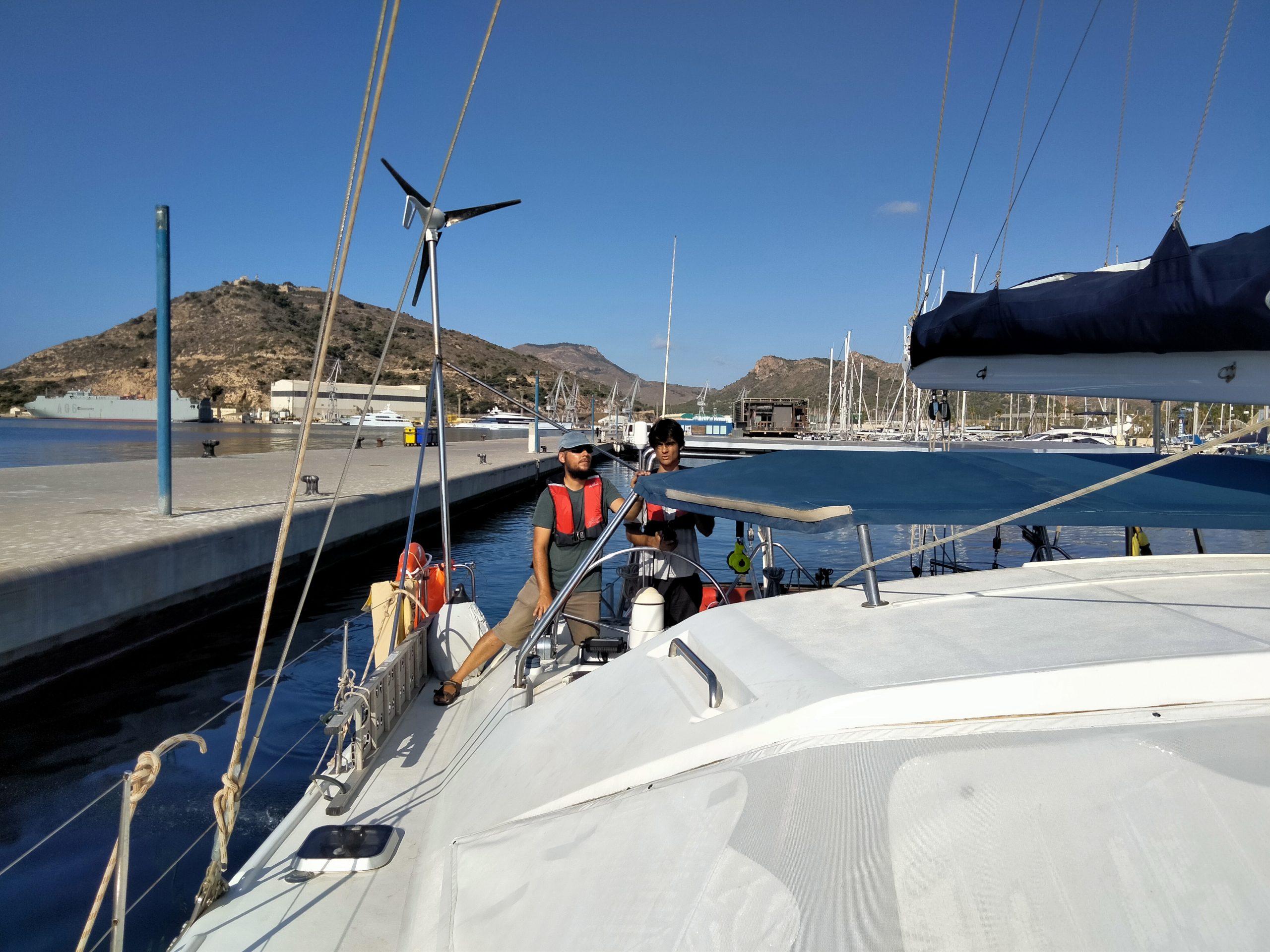
In the morning the wind was about 3-4 m/s.
When we got out of the harbor on the other side of the pier, there were bigger waves than we expected. Not long after departure, we were all seasick. Victor felt the worst and got really sick for a while.
We pulled the sails up and soon found out that our boat isn’t very good at sailing upwind. As soon as we got close to the wind, it lost all speed. So we had to cross by sailing almost beam reach (the wind coming from the side), and practiced doing turns to cross. With beam reach sailing we sailed between 6 and 8 knots. This also meant that our sail track was a lot longer than we had expected. Next time we’ll have to try putting up an extra sail to work as a turbo for the headsail.
We had a current against us, and the waves made the sailing somewhat bumpy. All five crew members were a little seasick. No one had the energy to run inside for lunch, so it was a trip on water and granola bars.
More favourable wind along La Manga
As we rounded the corner at the southern end of La Manga, we caught the wind from the side, and sailed beam reach the last part of the route along La Manga. It was a strange sight that La Manga had tall buildings, and between the buildings you could see the outlines of mountains from a long distance behind them.
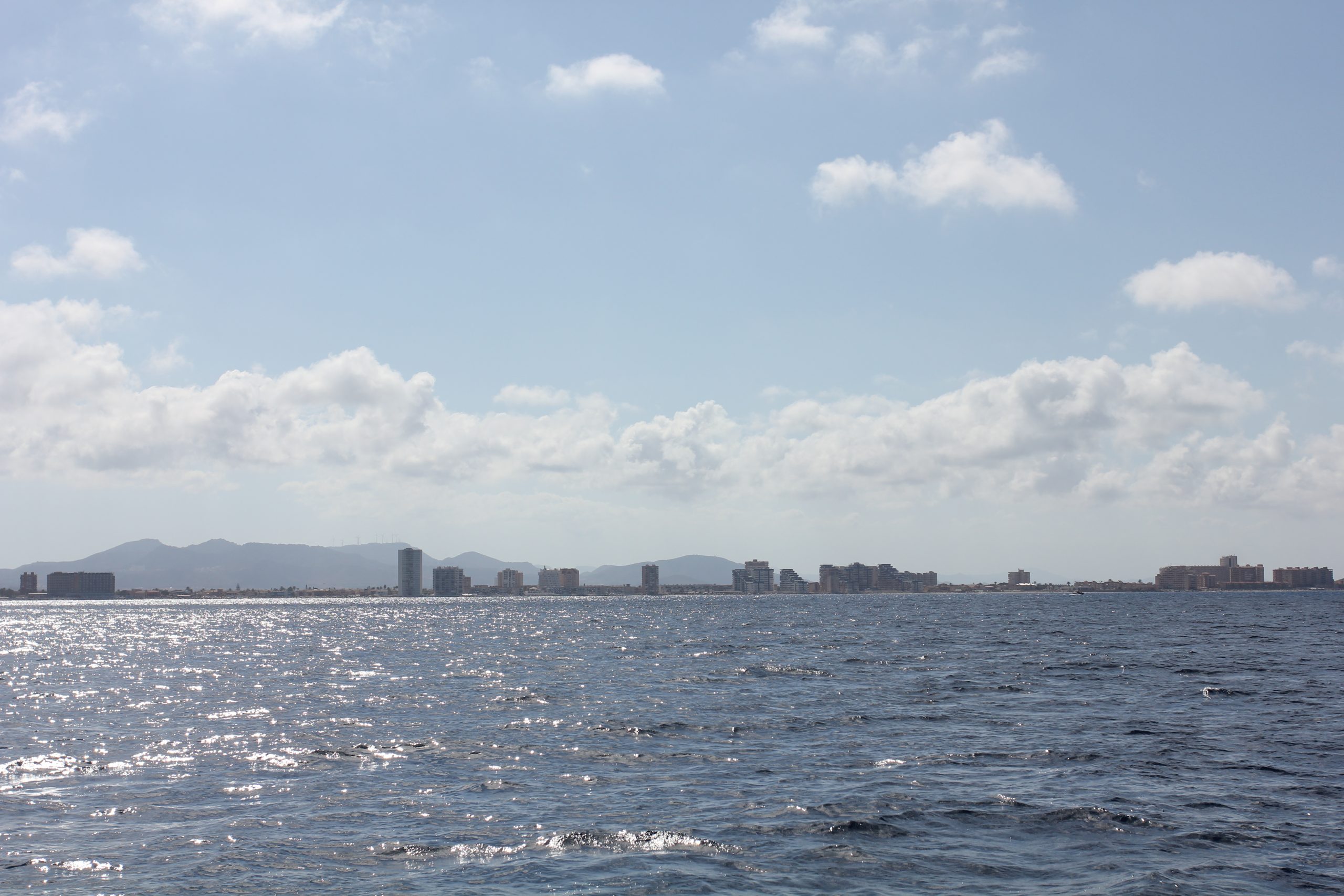
With Victor at the helm, we made 8.7 knots on the last leg of the trip.
Entrance to the Lagoon
The entrance channel to the lagoon took us underneath a road bridge, that opens for sailboats for 15 minutes every two hours.
 We arrived at the lagoon by 6pm, 2 hours later than planned. There was a long line of boats in and out of the lagoon. The narrow waterway was just wide enough for all that traffic.
We arrived at the lagoon by 6pm, 2 hours later than planned. There was a long line of boats in and out of the lagoon. The narrow waterway was just wide enough for all that traffic.
The anchorage
There are several marinas and anchorages near the entrance and we also found a good place to anchor for the night fairly quickly. With the long sailing time and seasickness due to the waves, we couldn’t manage a trip into land. Martin was the only one who went for a swim around the boat. We saw a really nice sunset towards the land side of the lagoon, where it seemed to be mainly lower settlements and natural areas with mountains in the horizon.
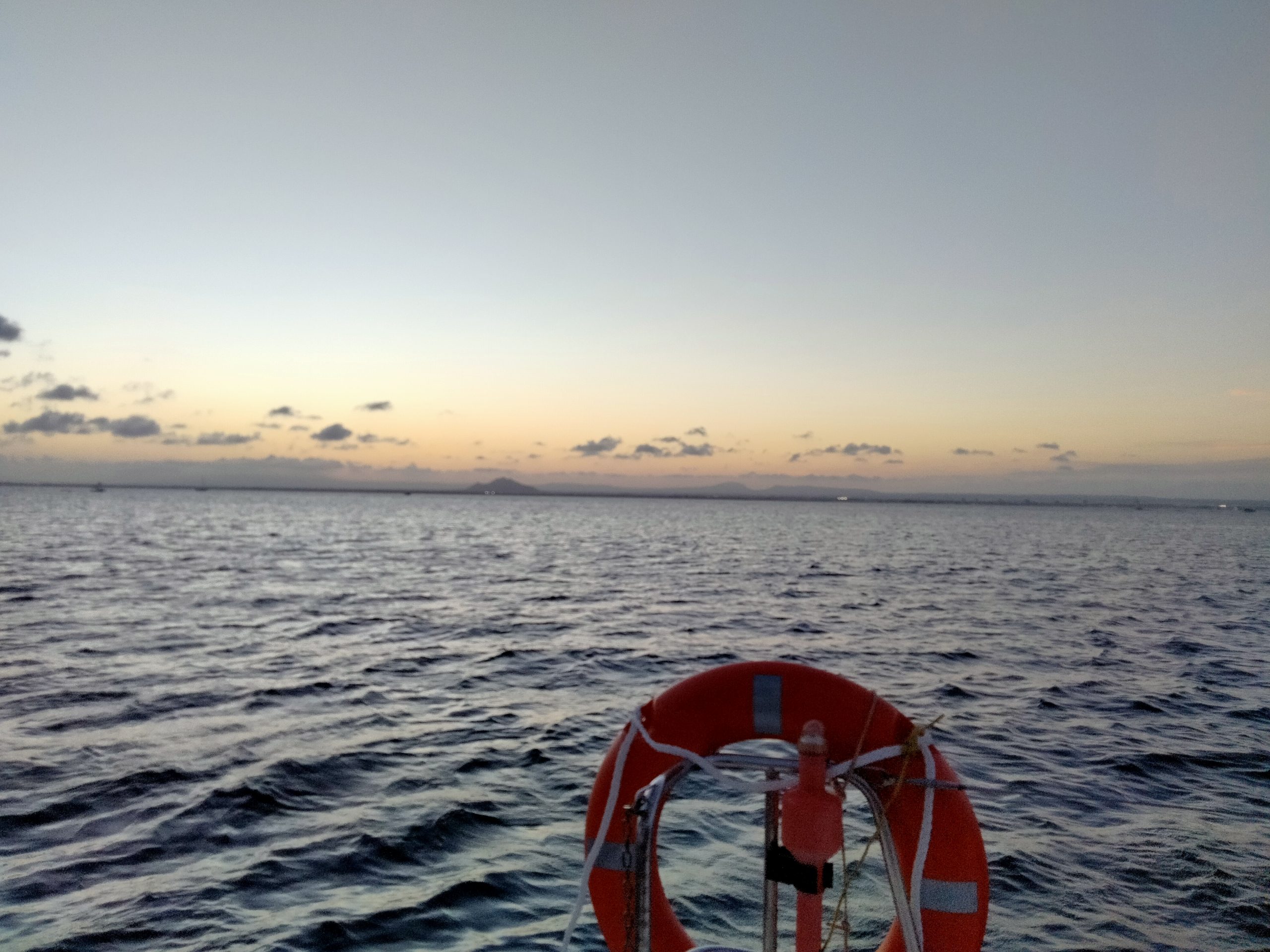
It’s a bit of a pity that we didn’t have time to be there for longer. Due to an appointment with a mechanic at our marina, for changing a broken bilgepump on Monday, we could only anchor at Mar Menor for one night. It looked quite nice in the lagoon with beaches and restaurants, and we could easily have spent 4-5 days there. We will probably try to do another trip to Mar Menor later on.
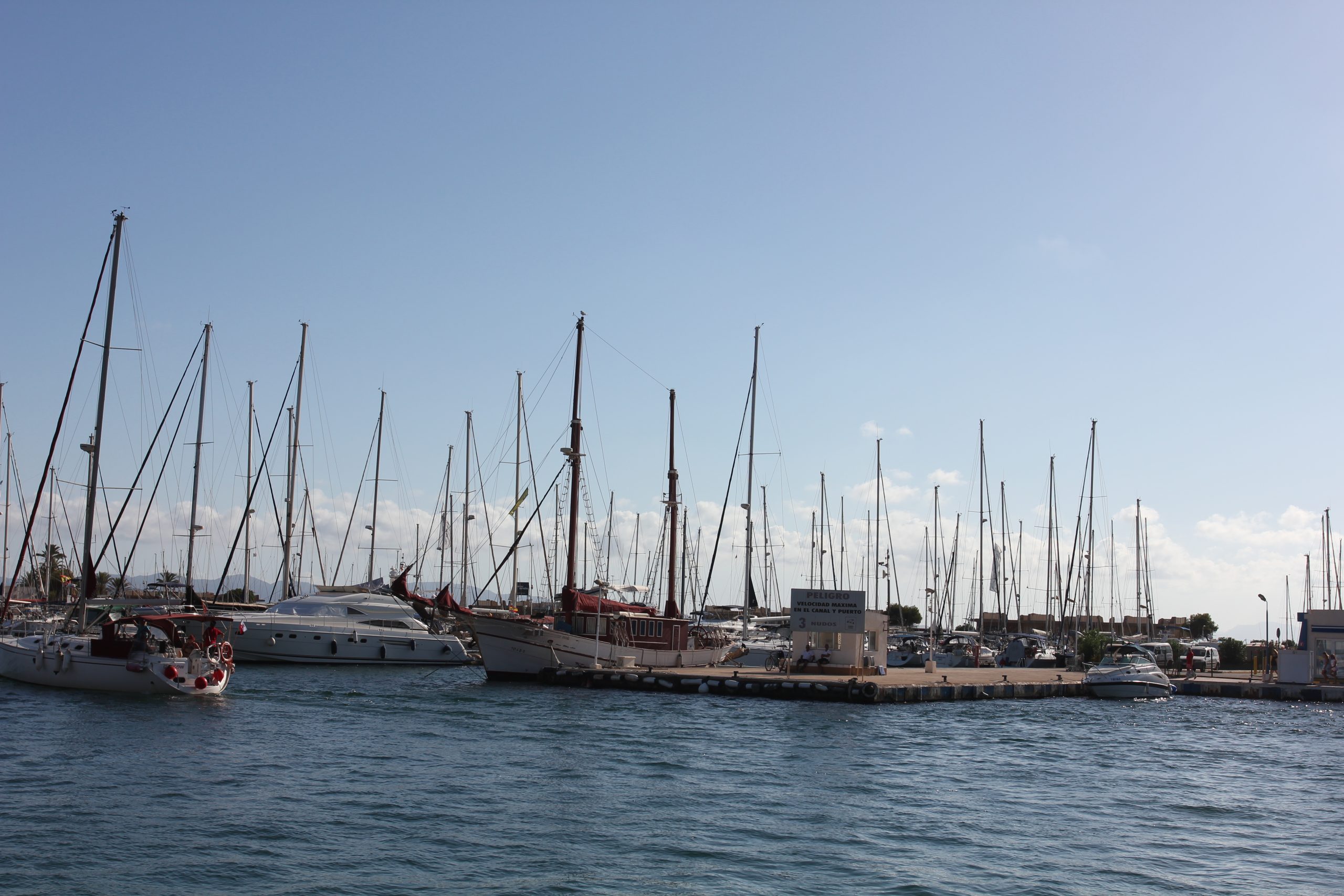
At night the anchor alarm had sounded several times. We were out and set more anchor chain once. In the morning we could see the anchor had drifted a bit, but the wind was off shore so it didn’t matter much.
The return
Next morning when we pulled up the anchor, kilos of seaweed and other green stuff followed with it. Martin had to raise and lower the anchor several times to get it reasonably clean.
On the way home there wasn’t much traffic in the waterway. Once we had passed the waterway, we felt the higher wind speed of 8 m/s that we had also seen in the forecast.
The boat in front of us turned into the wind as soon as it was out of the waterway, and instantly they had the mainsail up in no time. They probably had electric winches. We tried the same, but our sail is quite big and with Martin at the helm, only Anton was strong enough to hoist the mainsail. The many hours of fitness back home in Denmark paid off and after a bit of fighting with the battons in the mainsail that got stuck in the lazyjack due to the wind, he managed to get the mainsail up. The headsail was easier to get up, and once the sails were in place, we sailed home beam reach on the first stretch along La Manga. Victor got the speed up to 9 knots at the maximum.
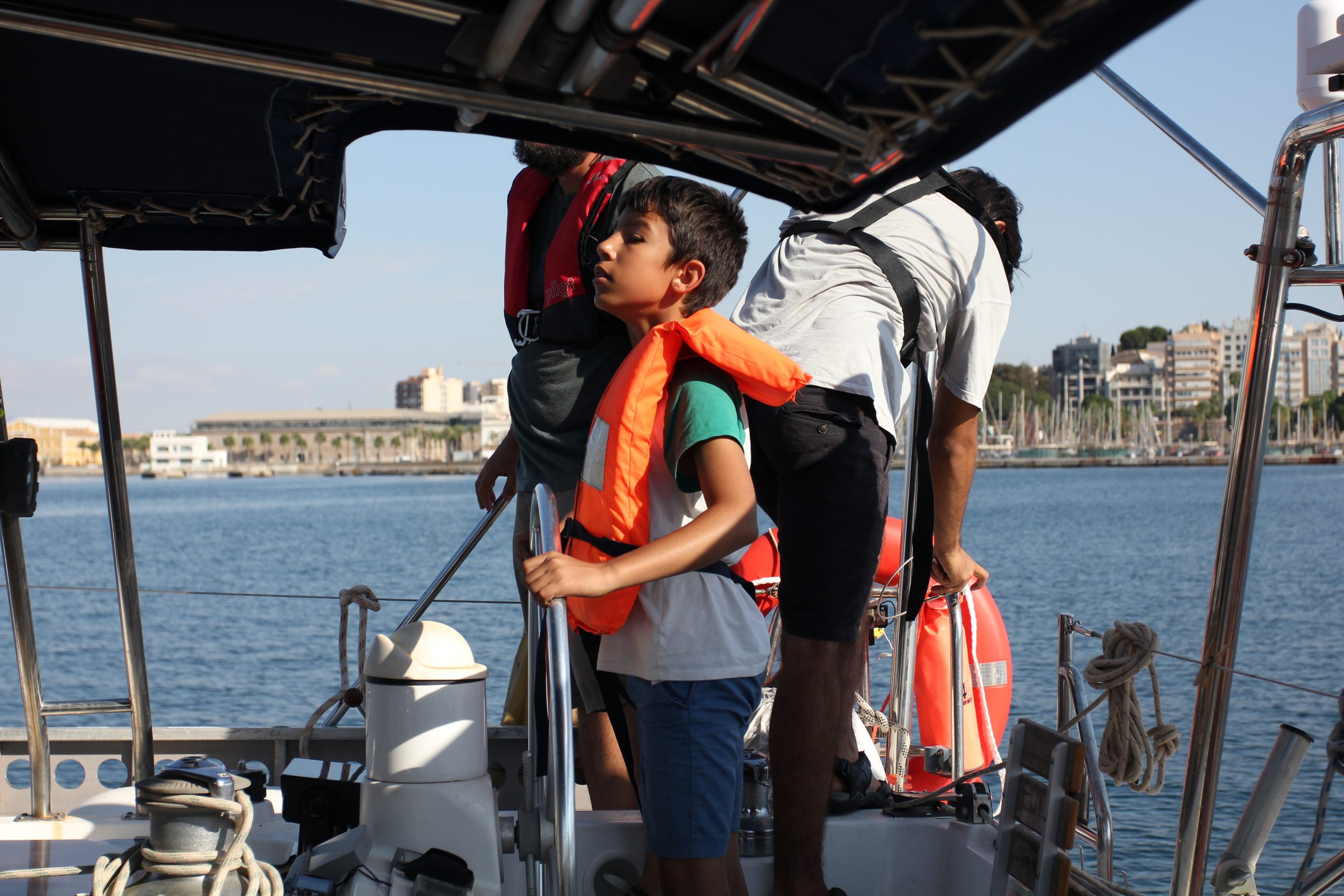
As we rounded the corner at the southern end of La Manga, we had the wind at our backs and the waves with us. We lowered the mainsail and sailed home with the headsail alone at a speed of 4-5 knots. It was a different and much more pleasant sail than the day before, although the waves were bigger.
The weird Noise
At one point during the sail we could hear a mechanical sound that we couldn’t quite identify where was coming from. The sound came and went. At first we thought it might be one of the new propellers that hadn’t been folded, and started one engine, then the other. That made the sound go away, but after a while it came back, and got louder and we could hear it was coming from one of the engine rooms.
After some while, we found out that there was water down in that engine room. The noise was coming from the pump that was broken and had to be replaced the next day. In a way it’s good that we already have a solution to that problem, but on the other hand it’s a bit worrying that so much water was coming in. I guess there’s always something that needs more investigation and fixing on a boat like this. It’s almost like a house.
Cheers to a successfull sail
Because of the wind and the current with us, we were back in the marina at 3pm.
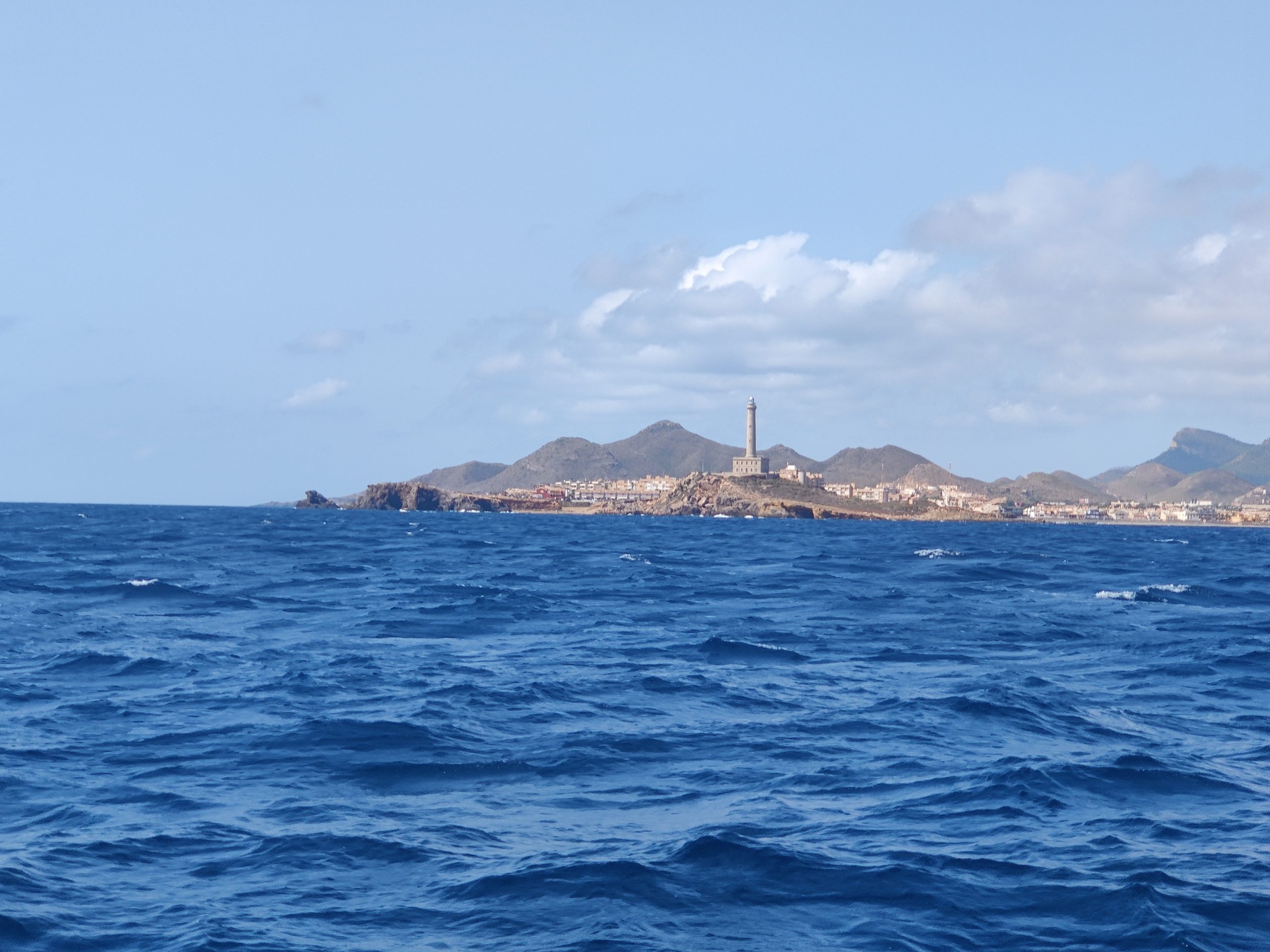
After a nap and a shower, we went out to celebrate the succesfull trip with a nice dinner and wine.
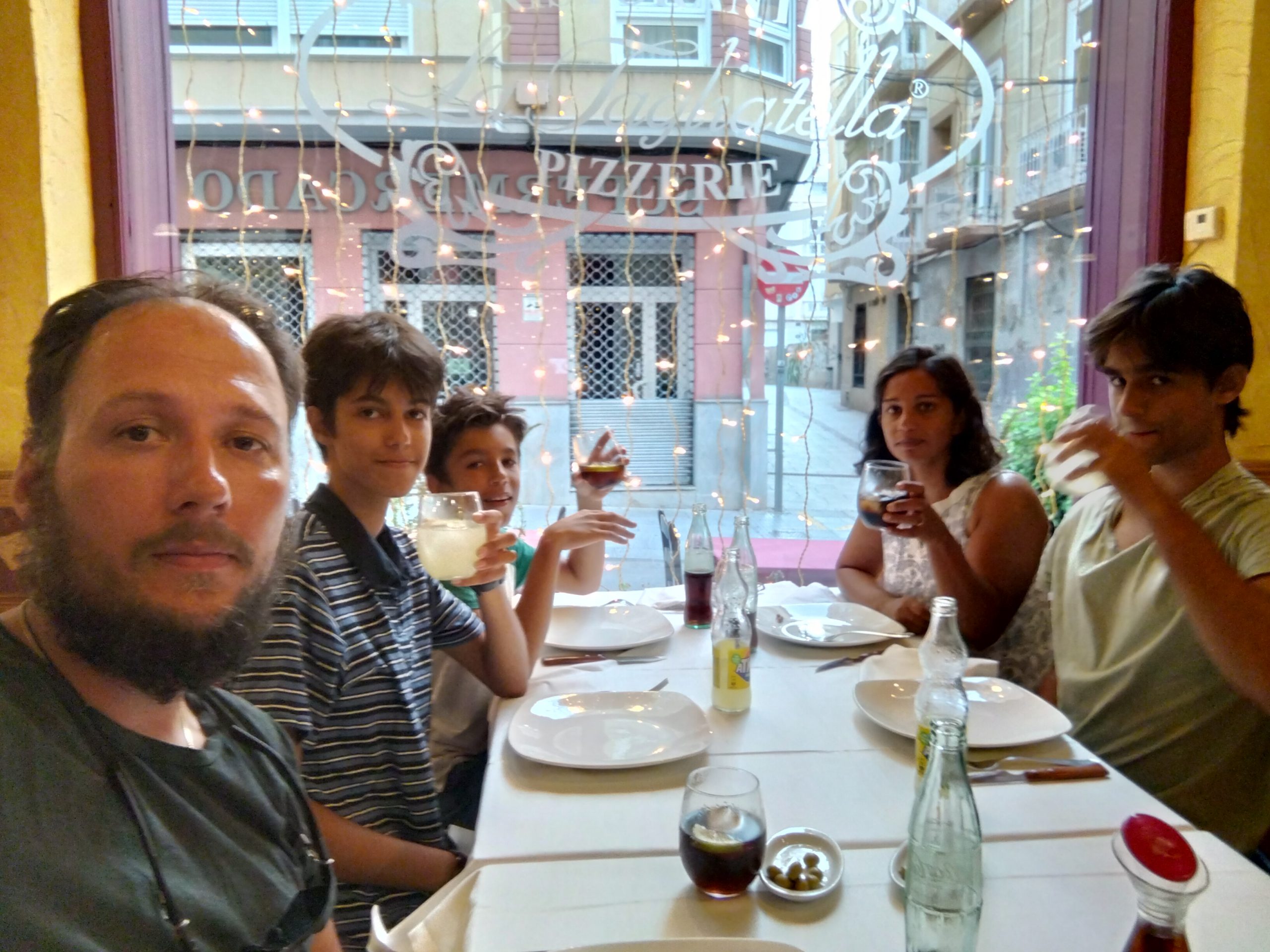
Up next
Stay tuned for the next blog post about our marina, Yach Port Cartagena and the everyday-life for us in Spain.
